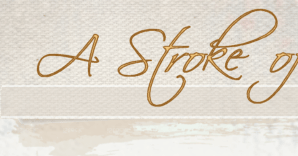
I also get upset with businessmen who call me "sweetie".
Kidding aside, I'm sorry that behavior like that still exists and I am aware that it still does, unfortunately. My local reputation within the business community and work with civic organizations has spared me some of kind of attitude but occasionally a businessman (?) will suggest that I may not understand certain things "because you are an artist". If I think they can handle it I tell them being an artist is additive.
I am having a little problem with the idea of imagery and character/personality as separate things. I would not paint, photograph or otherwise choose to portray a subject with a smile because the "image" looked good and might make a good painting even though the subject was known not to smile and was otherwise mean spirited.
From a day in and day out perspective it seems that the best situation is to have enough time in discussion/photographing/sitting to allow pretense to dissolve and unguarded mannerism to emerge. Then, as Chase said " Do not imagine that I would disregard that thing that lies beneath the mask... But be sure that when the outside is rightly seen, the thing that lies under the surface will be found upon your canvas." A tilt of the head, a smile (or frown, if not from boredom), and any other characteristics that might be revealing when one is at ease and not threatened or asked to perform (as in "smile") is valuable.
It would seem that on a commercial basis we are mostly obligated to sum up, as much as possible, how a subject is known to the client, and how the work will be presented to family, friends, the public, institutions, etc., unless, as the artist, we are part of that community, our personal biases should be secondary. I do not know how many "sensitive" portraits are the result of painting sensitive people, and on this agree with Mike. We usually make that assumption when we admire a painting, but subject profiles and personality types never accompany the work. There is no history or study that I know of showing any corollary.
If the subject smiles often in the most natural way and without prompting, it is hard to discourage a smiling portrait. On the other hand, knowing that this same subject has survived tragedies and trauma adds more considerations than my skills can handle or than the best portrait can bring back a lost child to a grieving parent.
|

